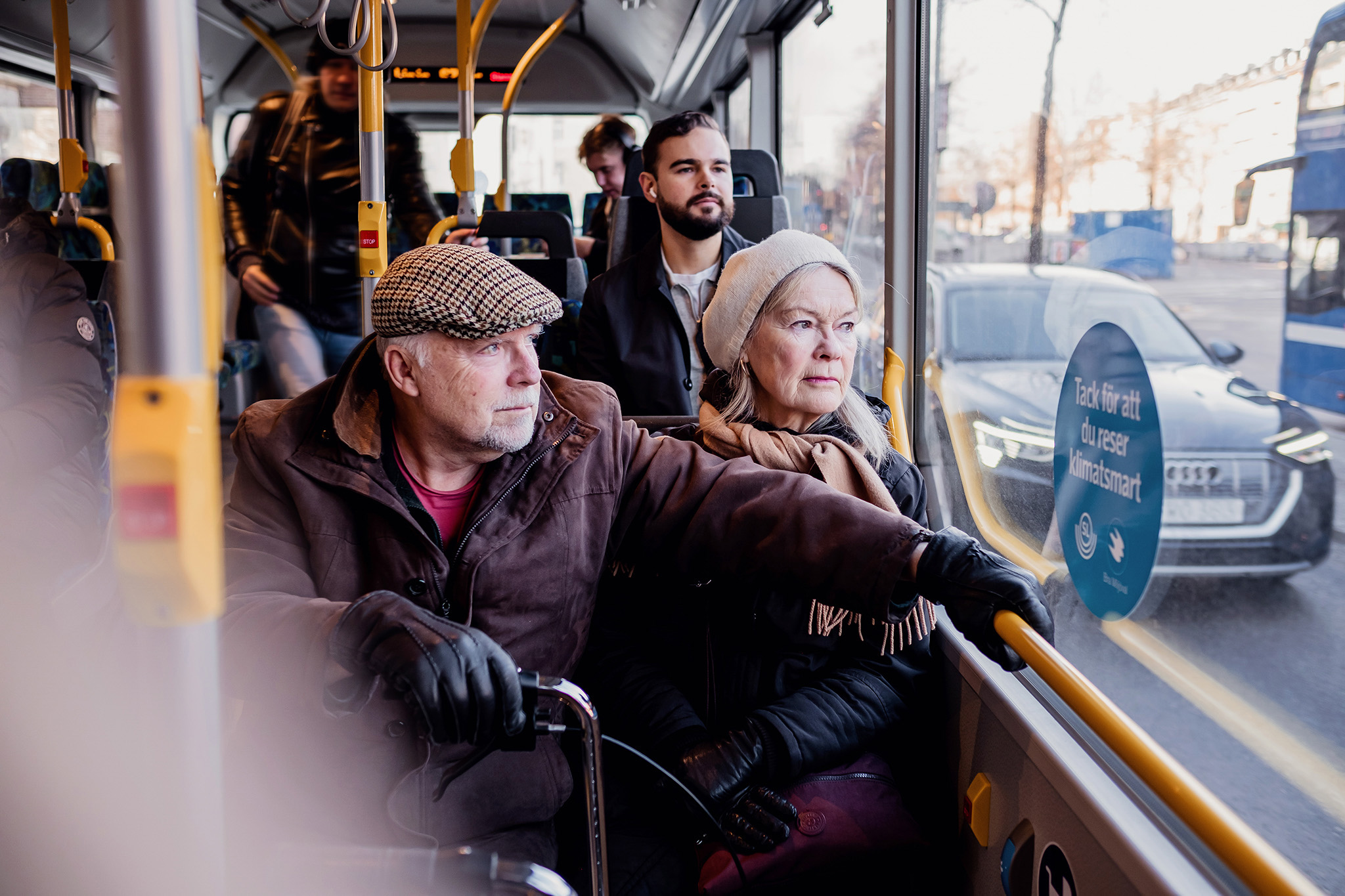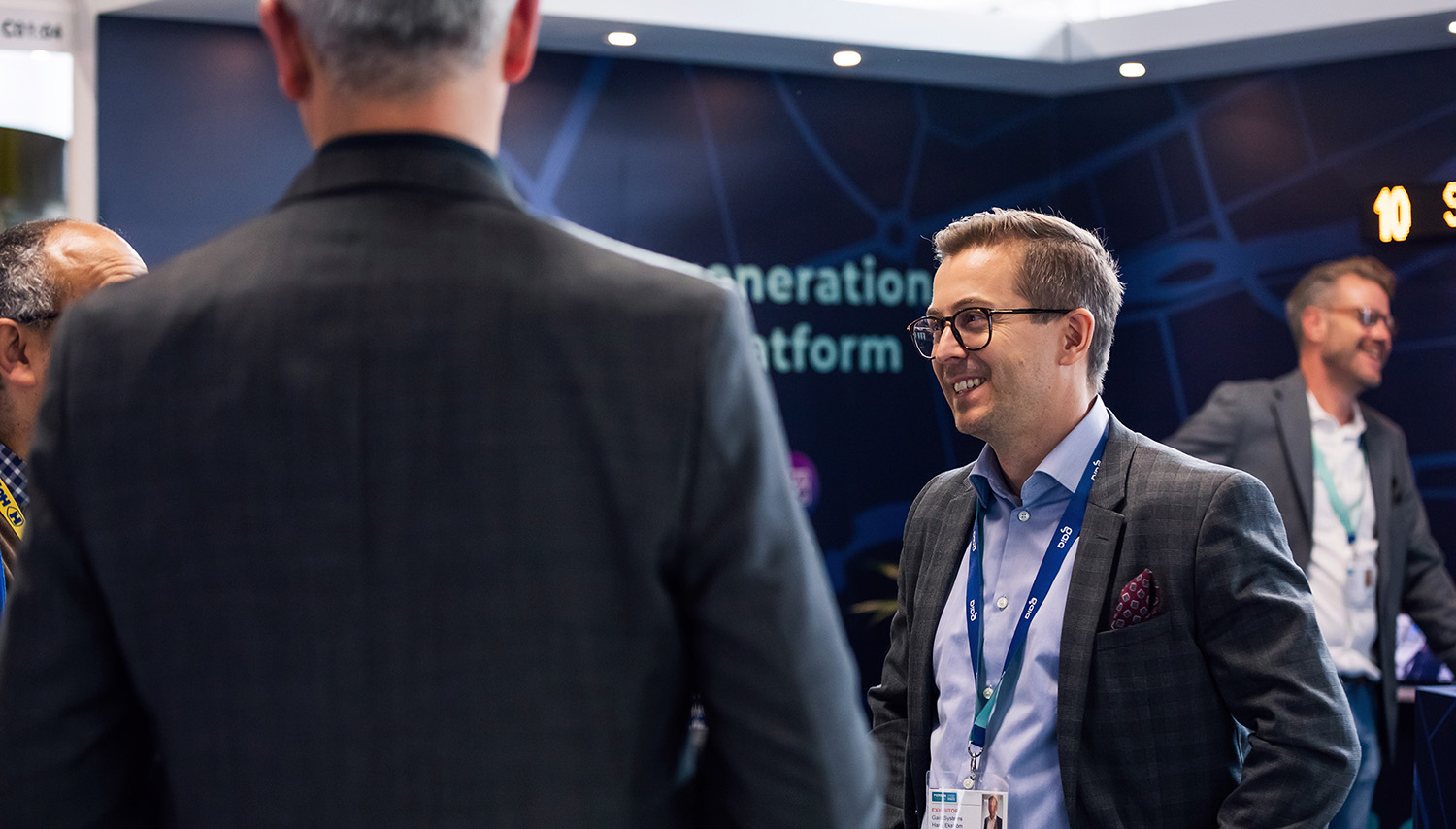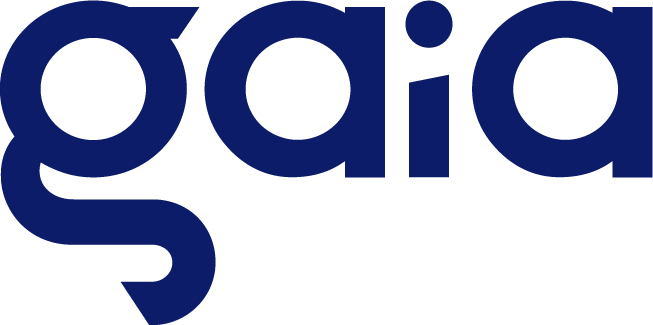Article
Now Östgötatrafiken’s connected buses are being test-driven
Published 2019-12-03
Currently, a dozen test buses with Gaia Public Transport on board are in operation, and we took the opportunity to check in with Jesper Strandberg, a product developer at Östgötatrafiken.
Jesper Strandberg works as a product developer focusing on information. His primary focus is on digital signs, screens, and traffic data, primarily on board vehicles but also at bus stops.
When we called Jesper, he explained that his role in the Gaia Public Transport project is to represent the business and monitor customer value, emphasizing the functional and operational aspects. He feels that Östgötatrafiken’s collaboration with Gaia has been very positive.
Right now, Gaia Public Transport is being tested on Östgötatrafiken’s buses. How is it going?
– We’re not looking for new features or flashy visual effects; we want to ensure quality and that everything works well. The testing period has given us a better understanding of how things work and when they don’t. It’s crucial for us to know and understand how things work to provide the best possible experience for our customers.
– Many things are going smoothly, but we’ve also identified some details that don’t quite work as we had imagined. We view these discoveries positively. We’ve faced challenges, including old hardware and drivers not behaving as expected. We continue to analyze everything statistically to understand how everything operates in practice.
How has the testing period been for the drivers?
Drivers of the test buses at Östgötatrafiken have provided positive feedback and constructive criticism. Jesper said that they have engaged drivers involved in the tests. Some vehicles currently have old screens that don’t look good, creating a negative impression, but we are aware of this. Our focus is on finding all the errors and correcting them.
– We inform the drivers how they should drive, but they often don’t follow exactly as intended. From our side, we constantly work on improving our understanding. We must understand why drivers make different choices and how we can facilitate practically, ensuring signs work in such situations.
– My impression is that we’ve received overwhelmingly positive reactions from our drivers.
Hardware has been a vital aspect for you at Östgötatrafiken. Can you explain?
– It’s challenging to understand and use technology different from what one is accustomed to. Previously, buses had built-in specialized systems, but now we can use simpler, cheaper standard products, such as the tablets that test bus drivers have switched to.
– It’s a significant advantage that technology and system intelligence are centralized. Still, it might take time for individuals to adapt if they’re unfamiliar with the new technology. It becomes more straightforward and better for them, but there’s an adjustment period when learning new technology.
When buses move to the cloud, they suddenly require an internet connection. What are your thoughts on that?
– We need internet connectivity for the system to work. However, this is more an opportunity than a problem, as the connection is what facilitates better customer value. However, we need to determine how long a driver can function without external and internal signage and how an outage impacts our service. We believe that, in the future, we neither want nor can do without connected buses, although there’s some apprehension from the industry and drivers during this transition period.
What’s the next step – how do you view the development opportunities?
– We’re deliberately downplaying all the new possibilities as we transition to a centralized system – there are many development opportunities and even greater customer value. Once the system is centralized and operational throughout the fleet, we can start personalizing apps and features. We’ve consciously decided to focus primarily on signs and announcements, as these are central to our customer experience. Once that’s in place, we can do more.
What problem does Gaia Public Transport solve for you?
– We aren’t the only ones who’ve had quality issues with our services. We felt that we couldn’t have excellent features that weren’t consistently reliable. We found it detrimental to our customers – they lost trust in the technology. We realized we couldn’t have a flashy solution that only works occasionally. We recognized flaws in our current system for a long time, and Gaia Public Transport addresses them.

The driver’s tablet is what the drivers perceive as the new system.
– The drivers’ interaction with the system is relatively minimal. Most of it is automatic, but the drivers have a few simple options to manually adjust the signs if they display incorrectly or if the driver needs to deviate from standard routines. The tablet is a good indicator if something stops working and supports the drivers regarding when to depart from each bus stop.
– Additionally, Gaia took the initiative to introduce a map where one can see the exact location of the bus. We didn’t initially request this but it has turned out to be something we’ve received very positive comments about. It doesn’t include any new traffic features but makes the system feel more vibrant and active, confirming its functionality, which adds inherent value. A map offers significant development opportunities, like providing operational support for traffic-leading actions such as a detour due to a temporarily closed stop. We need to consider further what to do with this feature in the future.
– This is an exciting project; we are pioneers and breaking new ground. This project also internally strengthens us at Östgötatrafiken.
We at Gaia find this project super exciting. If you’re curious to know more, you can read about the test period from the Gaia perspective.




